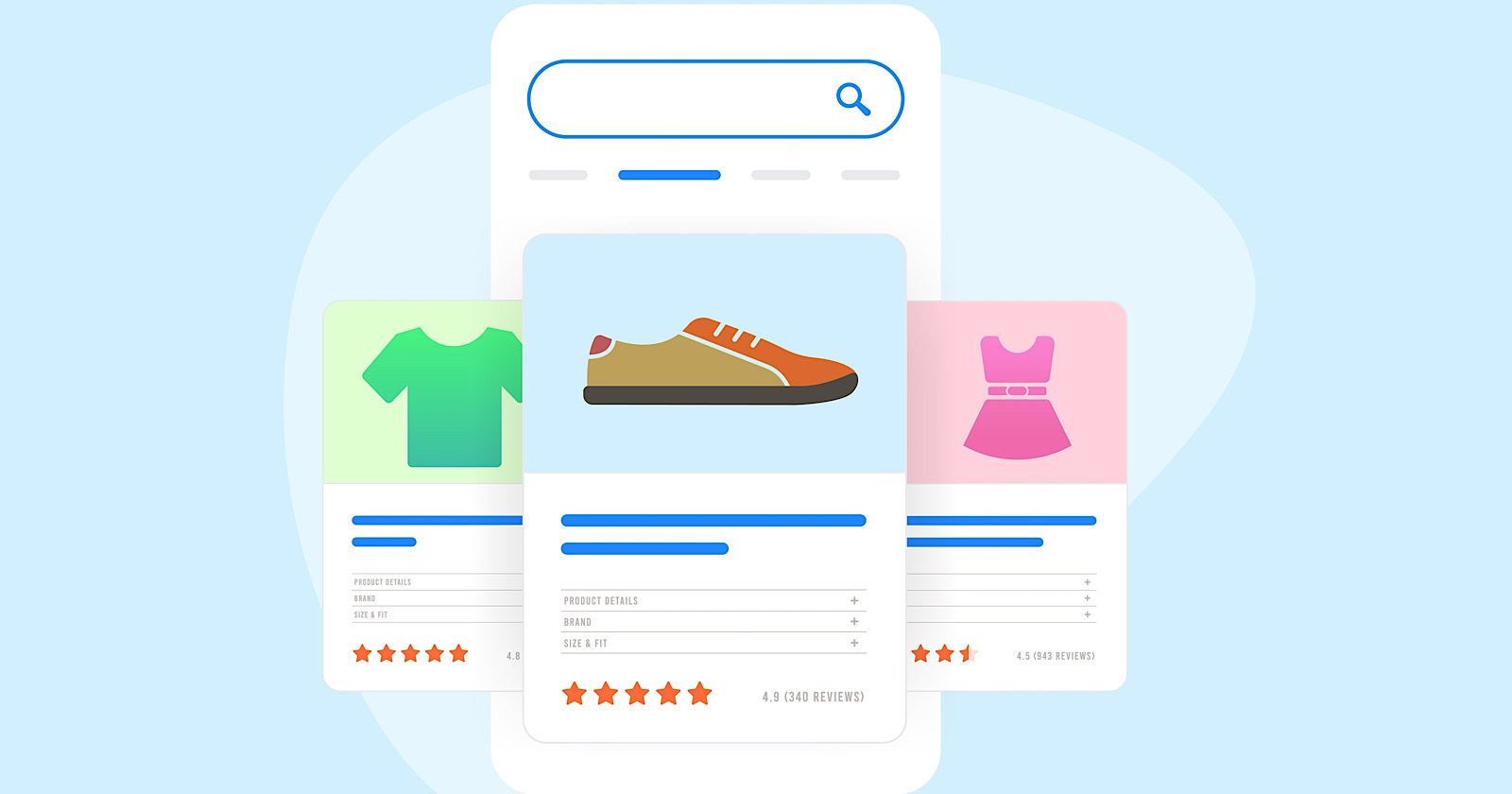SEO
How To Perform A SEO SWOT Analysis

For most organizations, implementing an effective SEO (search engine optimization) strategy involves collecting and analyzing significant amounts of keywords, content, analytics, and competitive data from various sources.
SEO professionals then need to use this data to prioritize keyword, content, structural, and/or linking tasks to address issues or build on existing organic search authority.
One familiar method of prioritization, which lends itself well to helping focus attention and often maximize limited SEO and marketing resources, is the SWOT (Strengths, Weaknesses, Opportunities, Threats) framework.
A SWOT, by definition, is geared to help identify items with the biggest potential impact on growth – or the most dangerous threats.
The following breakdown of organizational SEO priorities assumes keyword research has already been done and is being used for the website, SERP (Search Engine Results Page), and competitive data, which will be the foundation of an effective SWOT.
Keyword research alone is often deserving of its own SWOT process.
Strengths
One of the primary factors search engines use in determining your organic search visibility is an organization’s relative strength and authority for a topical group of keywords.
Identifying those keywords for which the organization already has some authority – or as some like to call “momentum” in the eyes of the search engines – is an excellent place to begin focusing your attention.
Authority is generally difficult to come by and takes time to establish, so why not build on what you already have.
Your first question should be, “Which pieces of content do I have that rank well (let’s say in the top 20 results) in the search engines for my primary keyword groups?”
Recognizing where you have existing strength can be leveraged in three ways:
- Look for opportunities to link out from or to your strongest pieces of content. This can have the dual effect of reinforcing your original piece of content by linking to more comprehensive answers to your audiences’ questions and borrowing from the authority of the strongest piece.
- Perform full-page keyword, technical, and link audits on all webpages that rank between positions five and 20 to see where any improvements can be made to move them higher in the SERPs. This may mean adjusting title tags, headings, or updating links to more current or relevant sources.
- Determine whether the “right” landing pages rank for the keywords you want to be found for. While it may seem great to have your homepage rank for several of your keywords, this is not optimal.
Searchers who land on your homepage looking for something specific will have to spend more time clicking or searching again to find the exact answer to their question.
Identify the pages you have that provide answers, and focus on having them usurp the position currently maintained by the homepage.
If you determine such pages don’t exist, then it’s time to create them.
Be sure to also pay attention to the types and characteristics of your strongest content pieces as signals to what content to create moving forward.
For example, if you have videos ranking well on Google and/or YouTube, by all means, create more videos.
If long-form blog posts dominate the top of the search results for your primary keywords, this is your cue to publish and share more of the same.
Weaknesses
We all have our weaknesses; when it comes to SEO, recognizing and admitting them early on can save us a great deal of effort, time, money, and lost business.
Keywords And Content
While there are undoubtedly keyword groups we feel we must be found for, it’s important to let go of those which will require too much time and/or effort to establish authority for.
Generally, a quick review of the search engine results will reveal keywords that are out of reach based on your competitors’ size, age, reputation, and quality of content.
In this case, looking at the more specific long-tail and intent-driven keyword alternatives may be necessary or considering other avenues (including paid) to generate visibility, traffic, and conversions.
Sometimes, the best strategy is to employ complementary paid search tactics until you can establish organic search authority.
Technical Audit
Another area of weakness, which you can readily control more, maybe the quality of your own website and content from a technical/structural, keyword relevance, or depth perspective.
You can begin identifying areas of weakness by conducting an SEO audit.
There are several excellent free and paid tools available, including Google Lighthouse and Search Console (specifically the Core Web Vitals Report and Mobile-Friendly Test), which will provide a prioritized list of issues and/or errors found in the title and heading tags, internal and external links, website code, keyword usage/density, and a myriad of mobile-friendly factors.
As noted above, you should start by focusing on and fixing any issues found on those pages for which you already have some authority based on search engine results.
Optimizing these pages can only help improve their chances of moving up the SERPs.
You can move on to other priority web pages based on website analytics data or strategic importance.
Backlinks
Organically obtained, relevant, quality backlinks (aka inbound links) are still a search engine ranking factor as they speak to, and can enhance, the authority of the site to which they link.
As with site auditing, many good third-party backlink tools can reveal where you maintain backlinks. These are particularly useful for looking at the backlink sources of your strongest-known competitors.
Where appropriate, you may want to reach out to obtain links from the same relevant sources to leverage their authority.
Opportunities
In SEO, opportunities abound for those who know how, where, and who take the time to look.
SEO is really about moving from one opportunity to the next.
Once optimization is deemed successful for one group of keywords or pieces of content, it’s time to move to the next topic upon which authority can be established or reinforced.
Keywords And Content
Several keyword research tools like Ahrefs, Semrush, and others can discover both keyword and content opportunities or gaps based on providing your website domain, the domains of your known competitors, or a targeted list of keywords.
Most provide prioritized lists of potentially high-value keywords based on estimated monthly search volumes, organic traffic, and/or relative competition.
In other words: Which high-value keywords are your competitors ranking for which you are not?
As with the Weaknesses above, part of this analysis should consider the level of effort required to obtain authority relative to the potential return on establishing organic visibility.
Is it a worthwhile opportunity?
 Screenshot of Semrush Keyword Gap tool, July 2022
Screenshot of Semrush Keyword Gap tool, July 2022- A more manual process for discovering keyword and content opportunities is to run a reverse website audit on competitors’ websites.
Or, spend some time simply reviewing your top competitors’ primary pages, paying particular attention to the keywords used in title tags, headings, and internal link anchor text.
These are presumably the keywords that matter most to them.
However, be careful, as this strategy assumes the competition has conducted their own keyword research and has been following SEO best practices, which may or may not always be the case.
Focusing on those competitors who rank well for your primary keywords should single out the ones who are intentionally optimizing for search.
Content Refresh
Another opportunity within a web presence is the refresh of top-performing or complementary content.
First, scan the SERPs or a preferred keyword tool to identify older content that is ranking for target keywords or serves to support other primary content pages.
Then, review this content to see where there may be opportunities to update text, images, internal/external links, or any other components.
Perhaps there’s an opportunity to enhance the piece by creating and adding images or videos.
Finally, re-share this content via appropriate channels, and perhaps consider identifying new avenues – as a previously popular piece of content will likely perform well again.
Existing content offers an excellent opportunity to build authority, often with just a little extra effort.
Backlinks
While typically a manually intensive process, there is long-term value in seeking out backlinks.
Ideally, you want to identify relevant, authoritative websites/domains from which high-quality inbound links can be obtained.
There are several sources you can use to start looking for inbound links:
The SERPs for your primary keywords are a natural backlink research starting point, as the websites found here are, by definition, considered “relevant” and “authoritative” by the search engines.
Of particular interest are those sites which rank ahead of yours because they presumably have higher authority upon which you can piggyback.
Look for any non-competitive backlinking opportunities such as directories, association listings, or articles and blog posts that you may be able to contribute to, get mentioned in, or comment on.
The Google Search Console Links Report is the next best resource for backlink research, as it indicates what Google recognizes as the domains linking to your content.
Here you can validate the quality and accuracy of the links you already have, as well as determine if there are any other opportunities to obtain additional links from these same domains.
Referral sources in Google Analytics represent external sites that send you traffic but may or may not be providing an organic search boost.
Review these domains/sites regularly to see other linking opportunities.
4. As noted under Weaknesses, several third-party backlink tools can be used to identify potential backlink sources where links to your competitors can be found.
Some will even help by authority ranking and prioritizing the value of each existing and potential source, which can save significant time.
Threats
Whether done intentionally or not, there are more than a few things which can threaten organic authority in the eyes of the search engines and should be prioritized to avoid potentially damaging penalties.
Content
The primary content threat most are familiar with is duplicate content, which, as the name suggests, is content repurposed on a website without proper attribution to the original source.
To avoid being penalized for using this type of content, you must be sure to include rel canonical tags by referencing the source content in the headers of pages containing the duplicate content.
In other words: It’s okay to have some duplicate content on a website, as long as the original source is properly identified.
Backlinks
While relevant, high-quality backlinks can help boost your authority, irrelevant, low-quality inbound links from non-reputable sites (particularly those that are part of paid link schemes) can do long-lasting harm and even get you tagged with a manual penalty.
The threat here is a potential loss of organic visibility and traffic.
Further, recovering from a manual penalty is not an easy or quick process.
Simply put, you should never pay for backlinks and ensure any backlinks you acquire have not been purchased on your behalf by a third party, like a marketing agency.
As such, you should regularly review the Google Search Console Links report or other backlink reporting sources for questionable domains or those you don’t recognize as relevant.
Competitors
All online competitors creating their own content represent threats to your authority.
Even if you maintain strong organic visibility and traffic relative to your “known” competitors, there is always the potential for new, aggressive, or unknown competitors to come onto the scene.
Many of the aforementioned SEO tools provide competitor discovery tools to help quickly identify domains that consistently appear in the search results for your primary keywords.
Oftentimes, there may be competitors here you’ve never considered. You’ll naturally want to pay attention to these competitors and use the tactics noted above to see what you can learn from them.
Search engines love and reward fresh, relevant content, and Google even has a freshness algorithm to identify it.
As such, you should regularly monitor the search engine results for new entrants, which may, over time, challenge your authority and position.
Of course, the best way to combat this type of threat is by continuing to publish and update your own comprehensive content, which will give the search engines less reason to question your authority.
Actioning On The SWOT
The detailed SWOT outputs will map prioritized actions to protect and/or improve online authority, visibility, and resulting traffic, leads, and revenue.
Proactive search marketers should conduct these analyses on at least a bi-annual, if not quarterly, basis, depending on how competitive the industry is and how active the competitors are.
A well-structured SWOT can provide an excellent roadmap for where, when, and how often action needs to be taken or content needs to be created and shared to boost your organization’s primary SEO goals.
More Resources:
Featured Image: Rawpixel.com/Shutterstock
SEO
Google Cautions On Blocking GoogleOther Bot

Google’s Gary Illyes answered a question about the non-search features that the GoogleOther crawler supports, then added a caution about the consequences of blocking GoogleOther.
What Is GoogleOther?
GoogleOther is a generic crawler created by Google for the various purposes that fall outside of those of bots that specialize for Search, Ads, Video, Images, News, Desktop and Mobile. It can be used by internal teams at Google for research and development in relation to various products.
The official description of GoogleOther is:
“GoogleOther is the generic crawler that may be used by various product teams for fetching publicly accessible content from sites. For example, it may be used for one-off crawls for internal research and development.”
Something that may be surprising is that there are actually three kinds of GoogleOther crawlers.
Three Kinds Of GoogleOther Crawlers
- GoogleOther
Generic crawler for public URLs - GoogleOther-Image
Optimized to crawl public image URLs - GoogleOther-Video
Optimized to crawl public video URLs
All three GoogleOther crawlers can be used for research and development purposes. That’s just one purpose that Google publicly acknowledges that all three versions of GoogleOther could be used for.
What Non-Search Features Does GoogleOther Support?
Google doesn’t say what specific non-search features GoogleOther supports, probably because it doesn’t really “support” a specific feature. It exists for research and development crawling which could be in support of a new product or an improvement in a current product, it’s a highly open and generic purpose.
This is the question asked that Gary narrated:
“What non-search features does GoogleOther crawling support?”
Gary Illyes answered:
“This is a very topical question, and I think it is a very good question. Besides what’s in the public I don’t have more to share.
GoogleOther is the generic crawler that may be used by various product teams for fetching publicly accessible content from sites. For example, it may be used for one-off crawls for internal research and development.
Historically Googlebot was used for this, but that kind of makes things murky and less transparent, so we launched GoogleOther so you have better controls over what your site is crawled for.
That said GoogleOther is not tied to a single product, so opting out of GoogleOther crawling might affect a wide range of things across the Google universe; alas, not Search, search is only Googlebot.”
It Might Affect A Wide Range Of Things
Gary is clear that blocking GoogleOther wouldn’t have an affect on Google Search because Googlebot is the crawler used for indexing content. So if blocking any of the three versions of GoogleOther is something a site owner wants to do, then it should be okay to do that without a negative effect on search rankings.
But Gary also cautioned about the outcome that blocking GoogleOther, saying that it would have an effect on other products and services across Google. He didn’t state which other products it could affect nor did he elaborate on the pros or cons of blocking GoogleOther.
Pros And Cons Of Blocking GoogleOther
Whether or not to block GoogleOther doesn’t necessarily have a straightforward answer. There are several considerations to whether doing that makes sense.
Pros
Inclusion in research for a future Google product that’s related to search (maps, shopping, images, a new feature in search) could be useful. It might be helpful to have a site included in that kind of research because it might be used for testing something good for a site and be one of the few sites chosen to test a feature that could increase earnings for a site.
Another consideration is that blocking GoogleOther to save on server resources is not necessarily a valid reason because GoogleOther doesn’t seem to crawl so often that it makes a noticeable impact.
If blocking Google from using site content for AI is a concern then blocking GoogleOther will have no impact on that at all. GoogleOther has nothing to do with crawling for Google Gemini apps or Vertex AI, including any future products that will be used for training associated language models. The bot for that specific use case is Google-Extended.
Cons
On the other hand it might not be helpful to allow GoogleOther if it’s being used to test something related to fighting spam and there’s something the site has to hide.
It’s possible that a site owner might not want to participate if GoogleOther comes crawling for market research or for training machine learning models (for internal purposes) that are unrelated to public-facing products like Gemini and Vertex.
Allowing GoogleOther to crawl a site for unknown purposes is like giving Google a blank check to use your site data in any way they see fit outside of training public-facing LLMs or purposes related to named bots like GoogleBot.
Takeaway
Should you block GoogleOther? It’s a coin toss. There are possible potential benefits but in general there isn’t enough information to make an informed decision.
Listen to the Google SEO Office Hours podcast at the 1:30 minute mark:
Featured Image by Shutterstock/Cast Of Thousands
SEO
AI Search Boosts User Satisfaction

A new study finds that despite concerns about AI in online services, users are more satisfied with search engines and social media platforms than before.
The American Customer Satisfaction Index (ACSI) conducted its annual survey of search and social media users, finding that satisfaction has either held steady or improved.
This comes at a time when major tech companies are heavily investing in AI to enhance their services.
Search Engine Satisfaction Holds Strong
Google, Bing, and other search engines have rapidly integrated AI features into their platforms over the past year. While critics have raised concerns about potential negative impacts, the ACSI study suggests users are responding positively.
Google maintains its position as the most satisfying search engine with an ACSI score of 81, up 1% from last year. Users particularly appreciate its AI-powered features.
Interestingly, Bing and Yahoo! have seen notable improvements in user satisfaction, notching 3% gains to reach scores of 77 and 76, respectively. These are their highest ACSI scores in over a decade, likely due to their AI enhancements launched in 2023.
The study hints at the potential of new AI-enabled search functionality to drive further improvements in the customer experience. Bing has seen its market share improve by small but notable margins, rising from 6.35% in the first quarter of 2023 to 7.87% in Q1 2024.
Customer Experience Improvements
The ACSI study shows improvements across nearly all benchmarks of the customer experience for search engines. Notable areas of improvement include:
- Ease of navigation
- Ease of using the site on different devices
- Loading speed performance and reliability
- Variety of services and information
- Freshness of content
These improvements suggest that AI enhancements positively impact various aspects of the search experience.
Social Media Sees Modest Gains
For the third year in a row, user satisfaction with social media platforms is on the rise, increasing 1% to an ACSI score of 74.
TikTok has emerged as the new industry leader among major sites, edging past YouTube with a score of 78. This underscores the platform’s effective use of AI-driven content recommendations.
Meta’s Facebook and Instagram have also seen significant improvements in user satisfaction, showing 3-point gains. While Facebook remains near the bottom of the industry at 69, Instagram’s score of 76 puts it within striking distance of the leaders.
Challenges Remain
Despite improvements, the study highlights ongoing privacy and advertising challenges for search engines and social media platforms. Privacy ratings for search engines remain relatively low but steady at 79, while social media platforms score even lower at 73.
Advertising experiences emerge as a key differentiator between higher- and lower-satisfaction brands, particularly in social media. New ACSI benchmarks reveal user concerns about advertising content’s trustworthiness and personal relevance.
Why This Matters For SEO Professionals
This study provides an independent perspective on how users are responding to the AI push in online services. For SEO professionals, these findings suggest that:
- AI-enhanced search features resonate with users, potentially changing search behavior and expectations.
- The improving satisfaction with alternative search engines like Bing may lead to a more diverse search landscape.
- The continued importance of factors like content freshness and site performance in user satisfaction aligns with long-standing SEO best practices.
As AI becomes more integrated into our online experiences, SEO strategies may need to adapt to changing user preferences.
Featured Image: kate3155/Shutterstock
SEO
Google To Upgrade All Retailers To New Merchant Center By September

Google has announced plans to transition all retailers to its updated Merchant Center platform by September.
This move will affect e-commerce businesses globally and comes ahead of the holiday shopping season.
The Merchant Center is a tool for online retailers to manage how their products appear across Google’s shopping services.
Key Changes & Features
The new Merchant Center includes several significant updates.
Product Studio
An AI-powered tool for content creation. Google reports that 80% of current users view it as improving efficiency.
This feature allows retailers to generate tailored product assets, animate still images, and modify existing product images to match brand aesthetics.
It also simplifies tasks like background removal and image resolution enhancement.
Centralized Analytics
A new tab consolidating various business insights, including pricing data and competitive analysis tools.
Retailers can access pricing recommendations, competitive visibility reports, and retail-specific search trends, enabling them to make data-driven decisions and capitalize on popular product categories.
Redesigned Navigation
Google claims the new interface is more intuitive and cites increased setup success rates for new merchants.
The platform now offers simplified website verification processes and can pre-populate product information during setup.
Initial User Response
According to Google, early adopters have shown increased engagement with the platform.
The company reports a 25% increase in omnichannel merchants adding product offers in the new system. However, these figures have yet to be independently verified.
Jeff Harrell, Google’s Senior Director of Merchant Shopping, states in an announcement:
“We’ve seen a significant increase in retention and engagement among existing online merchants who have moved to the new Merchant Center.”
Potential Challenges and Support
While Google emphasizes the upgrade’s benefits, some retailers, particularly those comfortable with the current version, may face challenges adapting to the new system.
The upgrade’s mandatory nature could raise concerns among users who prefer the existing interface or have integrated workflows based on the current system.
To address these concerns, Google has stated that it will provide resources and support to help with the transition. This includes tutorial videos, detailed documentation, and access to customer support teams for troubleshooting.
Industry Context
This update comes as e-commerce platforms evolve, with major players like Amazon and Shopify enhancing their seller tools. Google’s move is part of broader efforts to maintain competitiveness in the e-commerce services sector.
The upgrade could impact consumers by improving product listings and providing more accurate information across Google’s shopping services.
For the e-commerce industry as a whole, it signals a continued push towards AI-driven tools and data-centric decision-making.
Transition Timeline
Google states that retailers will be automatically upgraded by September if they still need to transition.
The company advises users to familiarize themselves with the new features before the busy holiday shopping period.
Featured Image: BestForBest/Shutterstock
-

 SEARCHENGINES5 days ago
SEARCHENGINES5 days agoBillions Of Google goo.gl URLs To 404 In The Future
-
SEARCHENGINES4 days ago
Daily Search Forum Recap: July 22, 2024
-

 SEARCHENGINES7 days ago
SEARCHENGINES7 days agoGoogle Core Update Coming, Ranking Volatility, Bye Search Notes, AI Overviews, Ads & More
-

 SEO5 days ago
SEO5 days ago11 Copyscape Alternatives To Check Plagiarism
-

 SEO6 days ago
SEO6 days agoGoogle Warns Of Last Chance To Export Notes Search Data
-
SEARCHENGINES3 days ago
Daily Search Forum Recap: July 23, 2024
-

 AFFILIATE MARKETING6 days ago
AFFILIATE MARKETING6 days agoThe Top 5 AI Tools That Can Revolutionize Your Workflow and Boost Productivity
-

 SEO4 days ago
SEO4 days agoSystem Builders – How AI Changes The Work Of SEO
















You must be logged in to post a comment Login